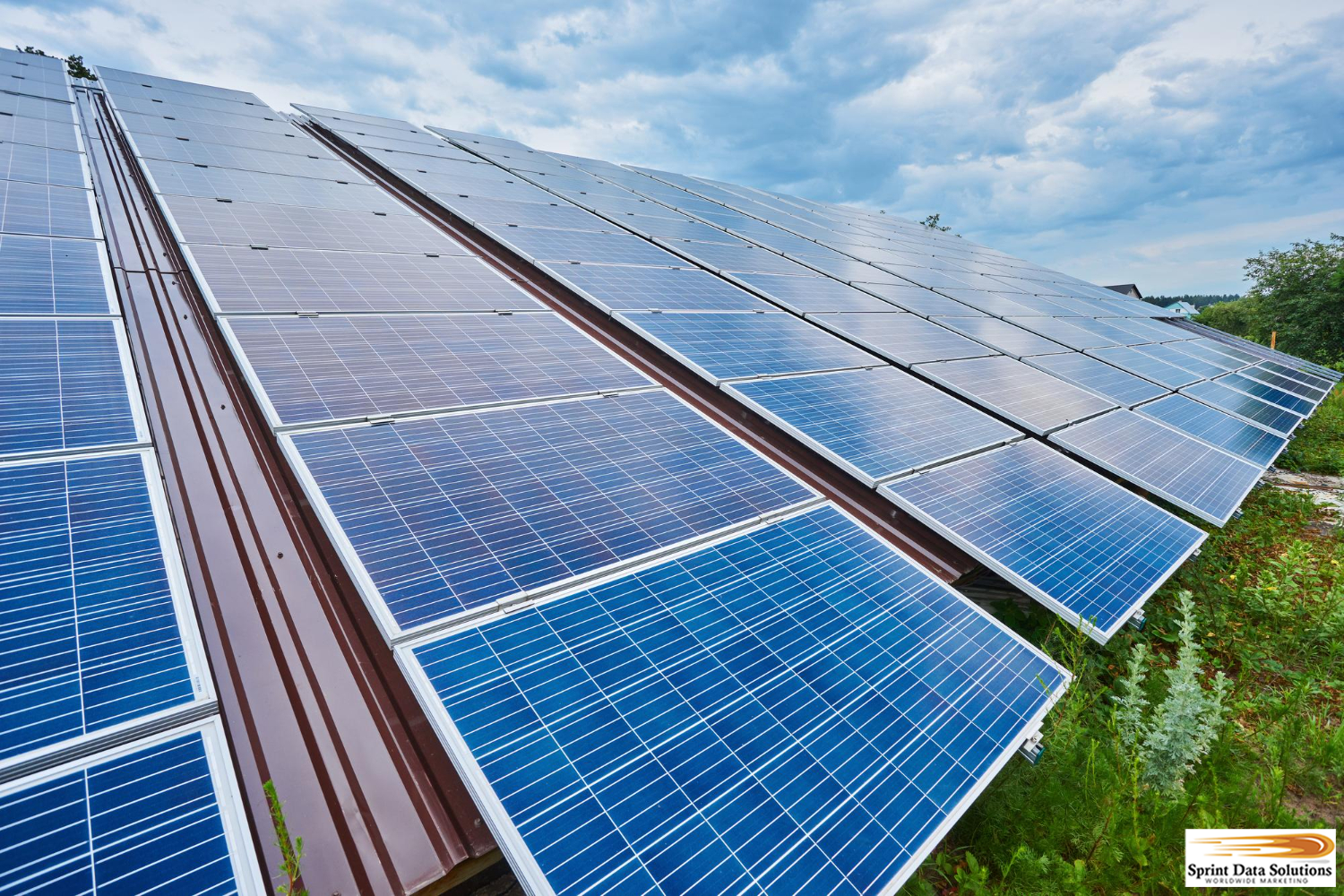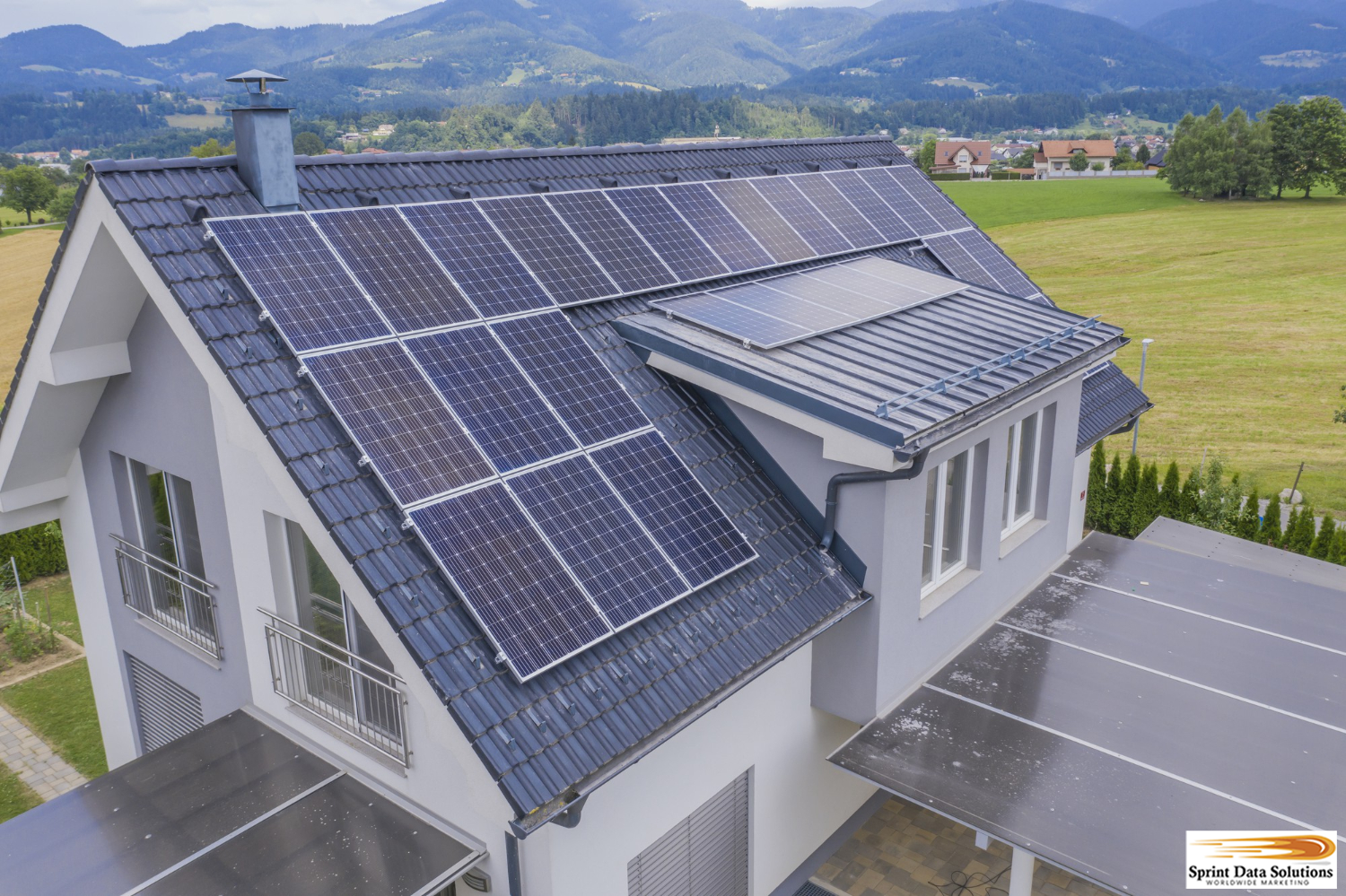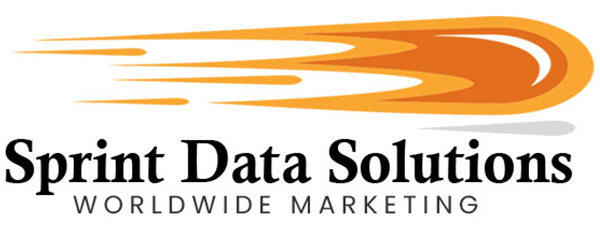Solar Power Is Generating More Leads Than Ever Before
Energy, particularly electricity, is a foundational element of daily life in the United States. It powers not only the lights in our homes but also the digital devices that have become indispensable in both personal and professional contexts—smartphones, computers, and even electric vehicles. The role of electricity transcends convenience; it is a necessity. That’s why electricity is classified as a utility rather than a luxury. Modern life and commerce would grind to a halt without it. Offices depend on it to run networks, machines, and communication systems, while healthcare facilities like hospitals rely on constant and stable electricity supplies to operate life-saving equipment such as ventilators, incubators, and monitoring systems. The interconnected nature of today’s society means that even short-term power outages can disrupt economic activity, education, transportation, and emergency services.

Coming Into Its Own
Solar power, both as an idea and a practical energy solution, has a long and fascinating history. While the foundational principles of converting sunlight into electricity have existed for decades, early applications were limited by the technology of the time. During the 1980s, photovoltaic (PV) cells were already capable of generating small amounts of electricity, which made them ideal for low-power devices such as digital watches and calculators. However, scaling this up to meet residential or industrial energy demands was an enormous challenge. The first solar power plants required vast tracts of land to install massive solar panel arrays, often accompanied by intricate systems like heliostats—motorized mirrors that followed the sun to concentrate light and enhance energy yield. These early solar farms were typically constructed in remote, flat areas such as the deserts of California, where both sunlight and space were abundant.
Fast forward to the present, and the landscape of solar energy has changed dramatically. Significant breakthroughs in solar cell efficiency, materials science, and energy storage have transformed what is possible. Modern photovoltaic panels are far more compact, efficient, and affordable than their predecessors. Today, a typical residential rooftop installation can generate enough electricity to cover all of a household’s energy needs. In many cases, these systems produce a surplus of electricity, which can be fed back into the local grid. This not only reduces electricity bills but can also qualify homeowners for tax incentives, rebates, or even direct payments from utility companies under net metering or feed-in tariff programs. The reduced need for space, along with the increased return on investment, has made solar power a practical and sustainable choice for both individual consumers and large-scale energy providers alike.
Solar power has significantly advanced over the years, emerging as a reliable and efficient source of renewable energy. Once the initial installation costs are covered, it offers the benefit of generating electricity at virtually no ongoing expense. This sustainable energy option is gaining popularity not only due to rising environmental concerns but also because of improvements in solar panel technology, government incentives, and the long-term savings it provides. Additionally, solar energy systems can reduce dependence on the grid, enhance energy security, and contribute to a lower carbon footprint.
A Stable Alternative
One of the most compelling advantages of solar energy compared to other forms of electrical generation lies in the overall stability it provides—both operationally and economically. Unlike wind power, which can be highly variable depending on wind patterns that fluctuate daily or seasonally, solar panels offer a more consistent performance. Even on overcast or rainy days, photovoltaic systems can still generate a significant amount of electricity—albeit at reduced efficiency—thanks to their ability to absorb diffused sunlight. This means that, while not entirely immune to weather conditions, solar energy systems provide a level of dependability that wind and some other renewables often cannot guarantee. Moreover, technological advancements in solar panel design and energy storage solutions have only improved this reliability, enabling solar installations to deliver consistent power more effectively throughout the year.
Beyond their physical reliability, solar power systems offer a remarkable degree of economic stability to property owners. Homes and businesses equipped with solar panels can dramatically cut their dependence on electricity from the traditional grid. Some may even generate surplus electricity, which can be sold back to the grid through net metering programs, turning energy consumption into a potential source of income. This independence insulates users from the volatility of fossil fuel markets, where prices are frequently impacted by global events such as geopolitical conflicts, international sanctions, trade tariffs, or corporate pricing strategies. For instance, spikes in oil and gas prices due to unrest in energy-producing regions can send electricity bills soaring for grid-dependent consumers, while solar users remain largely unaffected. This predictable and often lower-cost energy scenario provides peace of mind and long-term financial planning advantages, making solar a particularly attractive option for both residential and commercial users.
Another critical benefit of solar energy is the autonomy it offers. Properties equipped with solar panels and battery storage systems can continue operating even during grid outages, ensuring a continuous power supply regardless of external disruptions. This is especially valuable during natural disasters, infrastructure failures, or widespread blackouts, where traditional electricity users may be left without power for hours—or even days. Unlike backup generators, which require fuel and regular maintenance, solar energy systems can operate cleanly and silently without an ongoing fuel supply. This self-sufficiency is a game-changer for many, enabling homeowners to maintain essential services like lighting, refrigeration, climate control, and communication systems during emergencies. For businesses, it means uninterrupted operations and reduced downtime, which can translate to significant cost savings and enhanced resilience. In this way, solar power doesn’t just offer a greener energy source—it empowers users with a level of control and security that few other energy options can match.
It’s Not Just Homes
While solar panels have become a popular addition to private residences, the advantages of transitioning to cleaner, more independent energy sources extend far beyond individual homes. Commercial enterprises stand to gain significantly from solar power adoption. Beyond the clear environmental impact, businesses benefit from substantial long-term cost savings, enhanced energy security, and predictable electricity pricing. Investing in solar can also elevate a company’s brand image by demonstrating a commitment to sustainability—an increasingly important factor for both customers and partners. Whether it’s a retail store, a manufacturing plant, or an office complex, solar energy can reduce operational expenses and potentially increase property value, making it a smart strategic move for a broad range of industries.
Manufacturing
Manufacturing businesses are exceptionally well-positioned to capitalize on the benefits of solar power, thanks to two key characteristics. First, manufacturing facilities typically occupy expansive floor areas, which translates to large, flat rooftops—an ideal setup for high-capacity solar panel installations. This unused space, often overlooked, can be transformed into a productive asset that generates substantial clean energy. Second, manufacturing processes are notoriously energy-intensive, consuming vast amounts of electricity to operate machinery, lighting, climate control, and other critical systems. This high demand makes cost-effective, renewable energy solutions especially valuable.
While the upfront cost of installing solar panels may seem substantial, the long-term financial advantages are undeniable. Once operational, solar systems can dramatically reduce dependence on local power grids, slashing monthly utility bills and shielding companies from volatile energy prices. These savings begin to accumulate immediately, often paying back the initial investment faster than expected. Moreover, solar power enhances operational resilience, supports sustainability goals, and can improve a manufacturer’s public image—an increasingly important factor in today’s environmentally-conscious market. Ultimately, solar adoption not only boosts energy efficiency but also contributes to a more stable and predictable financial outlook, reinforcing a healthier bottom line.
Livestock
Farming and agriculture continue to be foundational pillars of American life and industry, with livestock management playing a critical role in both economic and food supply chains. Among the essential requirements for successful livestock operations is a consistent and reliable source of electric power. This need becomes even more acute during winter months, when many facilities must keep animals—such as poultry, cattle, or pigs—in temperature-controlled environments. For example, chickens raised for egg production require tightly regulated temperatures to ensure both animal health and optimal egg yields. These heating demands can result in significantly high energy bills.
In this context, solar power emerges as a highly practical and sustainable solution. Just as solar has proven effective in lowering operational costs for manufacturing plants, its application in large-scale livestock facilities is gaining traction. These facilities often feature large, flat roofs that are otherwise underutilized. By installing photovoltaic panels in these areas, operators can generate a substantial amount of clean energy directly on-site. This not only slashes heating and lighting costs but also insulates the business against future energy price volatility.
Moreover, integrating solar power can lead to rapid recoupment of installation expenses through both utility savings and potential government incentives, such as tax credits and grants specifically designed for agricultural sustainability. Over time, the investment pays off not just financially but also by enhancing the farm’s environmental footprint, which is increasingly important to modern consumers and regulatory bodies alike. For livestock businesses seeking long-term viability and resilience, solar energy offers a compelling, future-focused advantage.
Commercial
Solar power isn’t solely advantageous for industrial enterprises—it offers substantial benefits for white-collar businesses as well, including those in the technology, financial, legal, and service sectors. These businesses typically operate out of office buildings that consume significant amounts of electricity during working hours. From desktop computers, servers, and high-speed internet routers to copiers, printers, HVAC systems, lighting, and telecommunication infrastructure, the cumulative energy consumption can be considerable, even if individual devices use less power than heavy industrial machinery. By investing in solar panel installations—whether mounted on rooftops, over parking structures, or in adjacent land—these businesses can achieve meaningful reductions in their electricity bills. In fact, companies with larger physical footprints and moderate-to-high energy usage may find that, with a sufficiently sized solar array and effective energy storage solutions, they can approach or even achieve full energy self-sufficiency. This not only cuts operational costs but also protects against utility rate increases and enhances a company’s commitment to sustainability, which can be a strong value-add for clients, employees, and stakeholders alike.
Retail
Retail businesses are among the highest consumers of electricity due to their extensive operational needs. These include lighting for large showroom or storage spaces, climate control systems, refrigeration for perishable goods, and an array of electronic infrastructure such as surveillance cameras, security systems, and point-of-sale equipment. This energy demand is even more pronounced in large-scale property management endeavors like shopping malls, department stores, or big box retailers that operate out of standalone facilities. Fortunately, these businesses often have a significant yet underutilized asset: expansive rooftop areas. Traditionally used only for basic weather protection, these roof spaces present an ideal opportunity for renewable energy deployment.
Installing solar panels on these rooftops—or on other unused portions of the property such as parking lot canopies—can greatly reduce a business’s dependency on grid-supplied electricity. Solar energy systems can provide a stable and predictable source of power, translating to more consistent utility costs and reducing exposure to price volatility in the energy market. The larger the scale of implementation, the more substantial the impact: companies can achieve partial or even total energy self-sufficiency. This not only slashes monthly electricity bills but also transforms what was once an overhead expense into a long-term investment in cost reduction. Additionally, renewable integration boosts the sustainability profile of the business, potentially improving brand perception and meeting corporate environmental goals. Over time, this strategic energy shift strengthens financial performance and operational efficiency, eliminating one of the most persistent cost burdens faced by retailers.

Residential
One of the most transformative impacts of solar power generation has been in the private residential sector. Homeowners across various regions often face fluctuating monthly electricity costs due to differences in local utility pricing models, which can include tiered rates, time-of-use surcharges, or seasonal demand changes. This unpredictability creates financial stress and makes energy budgeting difficult. Solar energy systems offer a compelling solution by providing a consistent, renewable source of power that significantly reduces or even eliminates reliance on grid electricity. One of the major advantages is the elimination of time-based pricing penalties—residents no longer need to limit electricity use during expensive “peak hours” since their solar panels generate power throughout the day. Additionally, with the integration of modern home battery storage systems, excess solar energy can be stored during daylight hours and used after sunset. This not only ensures uninterrupted power during the night but also increases a household’s energy resilience during blackouts or grid instability. The result is greater energy autonomy, cost predictability, and a smaller carbon footprint—all of which contribute to long-term economic and environmental sustainability for homeowners.
Rural Residents
Solar power generation offers a highly practical and often essential solution for residents in rural areas. These regions frequently face unique challenges when it comes to electricity reliability. Even when homes are connected to the primary electrical grid, disruptions caused by natural events such as storms, wildfires, or heavy snowfall can result in prolonged power outages. In contrast to urban or suburban locations—where utility companies can often respond swiftly—rural areas may experience significant delays in power restoration. The geographic spread and lower population density make it more time-consuming and costly for crews to identify and address the source of the outage.
Installing solar panels, particularly when paired with battery storage systems, can provide a steady and reliable source of electricity independent of the central grid. This ensures that households maintain access to critical power for lighting, refrigeration, communication, and medical equipment, even during extended outages. For those living in areas prone to environmental hazards or unreliable grid service, solar energy offers not just convenience, but peace of mind and a measure of energy security. Moreover, solar systems can reduce or even eliminate monthly electricity bills, creating long-term economic benefits alongside their practical advantages. With advances in solar technology and financial incentives in many regions, solar adoption is becoming an increasingly viable and empowering choice for rural homeowners.
And it is precisely in engaging with these targeted customers and businesses—understanding their needs and delivering customized outreach—that Sprint Data Solutions Worldwide Marketing brings measurable impact, offering strategic data-driven solutions that enhance campaign effectiveness and boost conversion rates.
Who Is Sprint Data Solutions Worldwide Marketing?
Sprint Data Solutions Worldwide Marketing is a proudly American-owned enterprise headquartered in the vibrant city of Las Vegas, Nevada. Founded by a disabled veteran with a vision for excellence, the company has grown from humble beginnings into a recognized leader in the marketing industry. Its strong commitment to quality, innovation, and customer satisfaction has been the cornerstone of its ongoing success. Today, the organization is powered by a seasoned team with over 50 years of combined expertise in both traditional and digital marketing landscapes.
The company originally specialized in direct mail marketing, which provided a strong foundation in core competencies such as database development, list management, and analytical insights. This deep-rooted expertise in data-driven strategy enabled a seamless transition when digital marketing began reshaping the industry. Sprint Data Solutions was among the first to adapt, leveraging its data acumen to offer sophisticated digital services that gave clients a competitive edge and maximized campaign performance.
As its reputation and capabilities expanded, Sprint Data Solutions scaled its operations far beyond its Nevada roots. What began as a local marketing agency evolved into a full-service nationwide provider, extending its reach to all 50 states, including Alaska and Hawaii. The company’s footprint continued to grow internationally, granting clients access to key North American markets in Canada and Mexico, as well as lucrative opportunities across the Atlantic in European Union nations such as France.
Today, Sprint Data Solutions Worldwide Marketing remains committed to delivering cutting-edge, results-driven marketing strategies tailored to each client’s unique goals. Its evolution from a direct mail expert to a comprehensive, multi-channel marketing powerhouse reflects not only its adaptability but also its unwavering dedication to excellence.

How We Can Help
Sprint Data Solutions Worldwide Marketing has spent years meticulously curating an expansive and dynamic database of verified contact information, forming the cornerstone of its precision marketing strategy. This robust collection is not only homegrown but also amplified through strategic partnerships with reputable third-party data providers, significantly broadening the range of accessible consumer and business profiles. Every entry is collected via fully ethical and legally compliant practices—ranging from opt-in newsletter subscriptions, website account registrations, and customer service sign-ups, to survey completions and the voluntary donation of business cards for marketing use. What sets Sprint Data Solutions apart is the recognition that data is not a static asset. Instead, it is treated as a living resource—subject to continuous revision and validation. Routine updates are conducted to ensure that the information remains actionable and relevant, such as updating student records upon graduation, tracking employment shifts as professionals change roles or organizations, and noting demographic changes including death records for seniors. This vigilance prevents wasted outreach and ensures that clients are never marketing to outdated or non-existent contacts.
Yet, possessing a massive database alone is not sufficient to guarantee success in today’s competitive landscape. Sprint Data Solutions leverages the power of artificial intelligence and machine learning to elevate the utility of its data. These advanced analytics tools sift through vast arrays of raw data to segment, rank, and prioritize contacts based on relevancy to the client’s specific goals. Rather than merely supplying a generic list of names and addresses, the system produces finely tuned audiences aligned with the most meaningful criteria for each campaign. One of the primary filters used is geographic segmentation. Whether a client seeks to launch a national marketing initiative or a hyper-local campaign, Sprint can deliver with pinpoint precision. Campaigns can be structured as broadly as targeting an entire country, or narrowed down to a specific region like the Midwest, a single state such as Illinois, a major city like Chicago, or even a micro-neighborhood like Lincoln Park within that city.
In addition to geographic relevance, demographic customization offers another layer of targeting finesse. Clients can zero in on specific populations based on ethnicity—ideal for campaigns targeting African-American, Hispanic, or Asian communities—or by religious affiliation for faith-sensitive messaging. Economic criteria are also available, such as income brackets or asset levels, which is critical when marketing luxury goods or financial services. Further filters include age groups, lifestyle preferences, and even health-related data, such as individuals living with chronic conditions like diabetes, allowing marketers to create highly personalized and engaging campaigns. This combination of up-to-date, ethically-sourced data with cutting-edge AI-driven insights delivers a powerful advantage to clients, enabling them to maximize outreach efficiency, improve conversion rates, and achieve measurable marketing success.
Database Formats & More
Sprint Data Solutions Worldwide Marketing offers a comprehensive suite of data services tailored to fit the unique needs of any marketing strategy, regardless of the format or medium. For traditional direct mail campaigns, the company provides verified physical mailing addresses, targeting either general consumers or business entities. For digital outreach efforts, it supplies accurate and up-to-date email addresses that cater to both consumer and B2B objectives. In B2B scenarios, these email contacts are typically those of key decision-makers within targeted companies, ensuring high-value engagement. Similarly, telemarketing campaigns benefit from access to a wide range of phone numbers—residential for general consumer targeting and direct lines to influential professionals for B2B communications. Cellular numbers are also part of the data set and are particularly valuable for SMS and text-based marketing initiatives.
Beyond just providing raw contact data, Sprint Data Solutions also offers value-added services like its turnkey direct mail solutions, ideal for businesses lacking the internal expertise or resources to execute a campaign. This all-inclusive service supports clients through every phase of the direct mail process, from conceptual planning and graphic design to professional printing and final distribution. The entire operation is managed in-house, eliminating the hassle and risk of dealing with multiple third-party vendors. This streamlined approach ensures consistent quality, faster execution, and greater cost-efficiency, making it easier for businesses to achieve their marketing goals with confidence and clarity.
If you’re looking to connect with customers who are actively seeking solar energy solutions or complementary green technologies, Sprint Data Solutions Worldwide Marketing can provide precisely targeted lead lists to maximize your outreach. Whether you specialize in solar panel installations, energy-efficient products, sustainable home improvements, or related services, our data-driven strategies are designed to help you reach high-intent prospects and boost your ROI. Let us supply the leads that empower your business to grow in the rapidly expanding clean energy market.






